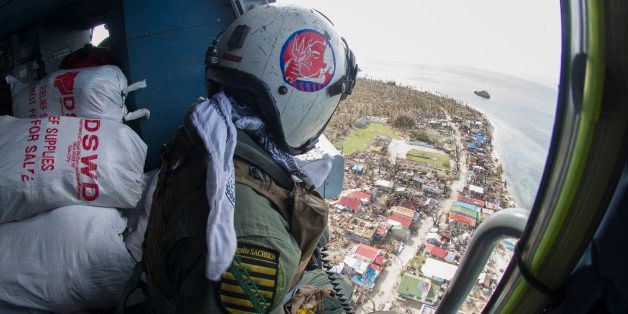
By Manuel Mogato
MANILA, Nov 23 (Reuters) - The U.S. military has began scaling back its emergency relief operations in the Philippines as work shifts to recovery and rehabilitation in typhoon-hit areas, a U.S. aid agency official said on Saturday.
Typhoon Haiyan, the most powerful storm to make landfall this year, struck the central Philippines on Nov. 8, killing more than 5,200 people, displacing 4.4 million and destroying an estimated 12 billion pesos ($274 million) worth of crops and infrastructure.
The U.S. Navy has pulled out its nuclear-powered aircraft carrier, the USS George Washington, but still has ten C-130 aircraft delivering relief supplies. Last week, the United States had 50 ships and aircraft in the disaster zone.
Jeremy Konyndyk, director for Foreign Disaster Assistance at the U.S. Agency for International Development (USAID), said the U.S. military had started to reduce its presence to allow civilian aid agencies to step up efforts.
"What we have seen, particularly over the past week, is now civilian and private-sector commercial capacity has started coming back up again and that is taking the burden off of the military actors," Konyndyk told Reuters in an interview.
"You don't want the military playing that role in the long run, they are an interim bridging capacity there, but in the long run, that really needs to be civilian role."
Konyndyk said there had been significant progress in meeting people's basic needs as more roads and ports opened in the worst-hit Leyte and Samar islands.
"Food has been distributed to 3 million people, shelter kits have been delivered to tens of thousands of families. I think the situation with immediate humanitarian needs is becoming stabilised."
Aid delivery was gathering pace as access to affected areas improved, the U.N. humanitarian office said it its latest report. However, major issues remained including the distribution of food and access to clean water and shelter material.
Konyndyk said the next step was for USAID and other international aid agencies to refocus their efforts on long-term recovery and reconstruction, giving priority to shelter and livelihoods for farmers and fishermen.
The United States has increased its typhoon aid to nearly $52 million, but latest estimates from the United Nations showed the disaster rehabilitation plan would cost $348 million. Only 38 percent of the plan is funded.
The United Nations is working to finish a blueprint for a Haiyan Action Plan reconstruction strategy by Dec. 9. The World Bank has increased to almost $1 billion its aid to support relief and reconstruction..
President Benigno Aquino is separately seeking extra budget from Congress to finance relief and rehabilitation efforts. (Editing by Robert Birsel)

